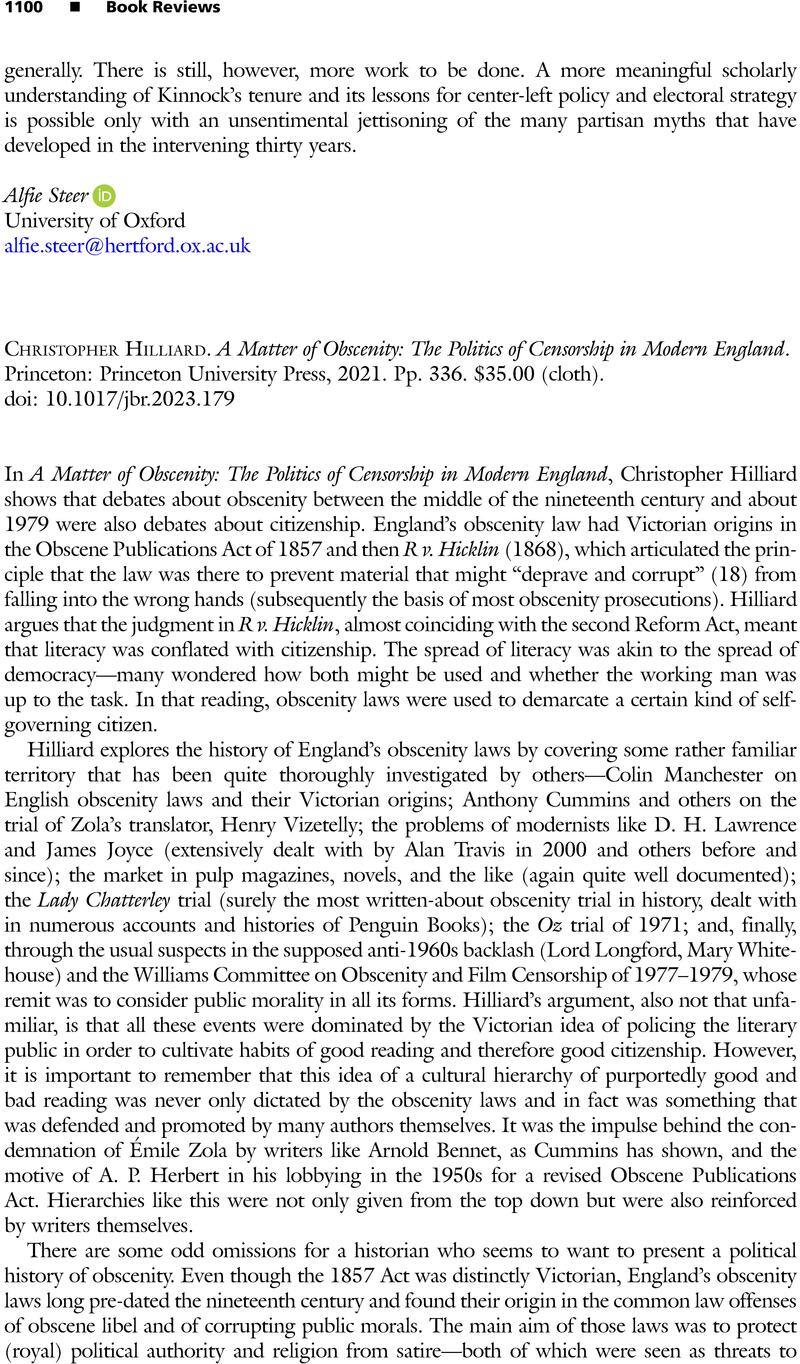No CrossRef data available.
Article contents
Christopher Hilliard. A Matter of Obscenity: The Politics of Censorship in Modern England. Princeton: Princeton University Press, 2021. Pp. 336. $35.00 (cloth).
Review products
Christopher Hilliard. A Matter of Obscenity: The Politics of Censorship in Modern England. Princeton: Princeton University Press, 2021. Pp. 336. $35.00 (cloth).
Published online by Cambridge University Press: 19 February 2024
Abstract
An abstract is not available for this content so a preview has been provided. Please use the Get access link above for information on how to access this content.

- Type
- Book Review
- Information
- Copyright
- Copyright © The Author(s), 2024. Published by Cambridge University Press on behalf of The North American Conference on British Studies



